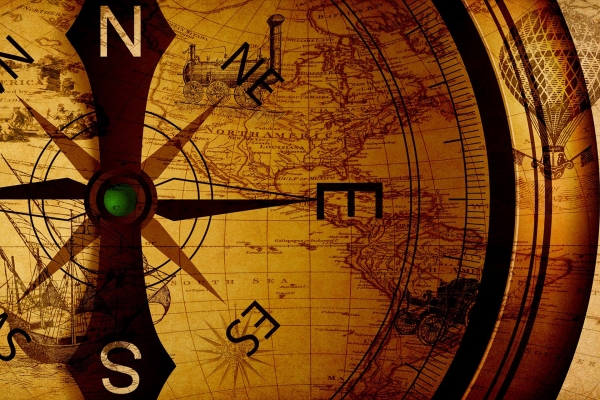Statement of objectives
- The Strait of Malacca is strategically located in Asia as the world’s most important sea lanes, linking the shipping from the Indian Ocean to the South China Sea, and also facilitates cross-straits trade and labour movements between the East and West.
- With rising global trade and maritime demand, along with the big economic rise of China, the Strait of Malacca has gained more prominence not only as the vital waterway but also for geo-strategic and security assurance.
- The question arises whether the Strait of Malacca has been fully realized, whereas there are alternatives sea routes that could complement Straits of Malacca.
- The objectives of this study are to review the current landscape of maritime and examine whether or not new initiatives to open up other sea lanes across Southeast Asia are an alternative or viable supplement to the Strait of Malacca as strategic sea lanes and straits to the world and Southeast Asia in particular.
Summary of evaluation: Straits of Malacca vs Alternative Routes
- While the crafting of alternative routes are intended to ease growing traffic congestion in Straits of Malacca, general consensus views seem to suggest otherwise (more of balance of economic and security powers in the Strait of Malacca), pointing towards the lack of strong economic justification to bypass the Strait of Malacca.
- Even on grounds of providing safer and more secure energy transportation, there are no compelling reasons to have alternative routes.
- The Trans-Siberian Railroad and Northern Sea Route (NSR) are poised to shorten travelling time compared to the Strait of Malacca. Both routes still have a long way in enhancing connectivity and improving services, hence East Asia countries are barely considering using it.
- For Dawei-Laem Chabang, the imbalanced infrastructure development is very obvious in both connecting countries. Even if Thailand is ready for the linkages, Myanmar may need another 10 years to achieve a full phase of development. Moreover, if this route is ever being adopted, shippers will have to worry about different custom processes and the efficiency of transferring goods involving different countries and between modes, i.e. sea and land routes.
- For Kra Canal project , while it poses a threat to the Strait of Malacca and Singapore, this project will burden Thailand’s fiscal budget. The cost of Kra Canal is substantially more than what Thai cabinet had approved for all its infrastructure projects (US $25 . 2 billion) in 2017 . Building Kra Canal involves loss of opportunity costs whereby many other development projects will have to be forgone to accommodate this mega -sized project .
- On the contrary, China has high interest on the Kra Canal . Firstly , Chinese oil companies have initiated key oil and gas pipeline connections between Myanmar and Yunnan (first RHS picture), and secondly , Kra Canal complements part of the Belt and Road Initiative (second RHS picture) . Kra Canal is a penny investment for China when compared to the cost of Nicaragua Canal between US $40 billion and US $50 billion (refer to Appendix ) . Kra Canal will certainly provide a strategic location for China to ease perceived geo -politics influences of the US in South China Sea.
- Furthermore, with seven Chinese ports listing in the world’s top 10 container ports, Kra Canal will help to strengthen China’s position as the world’s leading trading nation .
- From a maritime perspective, these alternative routes would bring some impacts and may trigger new dynamics to the conventional shipping traffic and trade.
- Questions have been raised on the economics of shipping and industry, financing, environment and geo-political while assessing the viabilities of these alternatives. For example, if the prospects of Kra Canal is so phenomenal, the question is why the plan hasn’t come to fruition after decades long discussions in Thailand. These mega projects are ambitiously expensive and too difficult to ascertain the full impact, unless more details are made known.
- Other alternative shipping routes through the Indonesian archipelagic waters, i.e. Sunda Strait, Lombok and Makassar Straits, may have their advantages, but the viability as alternative routes remain doubtful. Conceivably, it is more rational to conclude that these routes undoubtedly can complement the present Straits of Malacca.
- It may be more tactical for the stakeholders to invest in capacity building of existing ports and enhancing security in the Strait of Malacca as opposed to spending astronomical costs on the unknown frontier.
- While the Kra Canal will alter the conventional maritime landscape along the Strait of Malacca, and re-shape the Southeast Asia’s accessibility to the global trade, the maritime businesses should remain dynamic with investments in strategic locations whilst waiting for the fruition of this new plan.
- For Malaysia, the government and ports operators have to remain vigilant and be prepared to deal with any possible outcomes should the alternative solutions become reality. Developmental and expansion works at existing terminals are already on-going to ensure that these ports remain highly competitive to meet the growing demand.
- The developments of ASEAN Ports will be addressed in Part II of this research paper.



